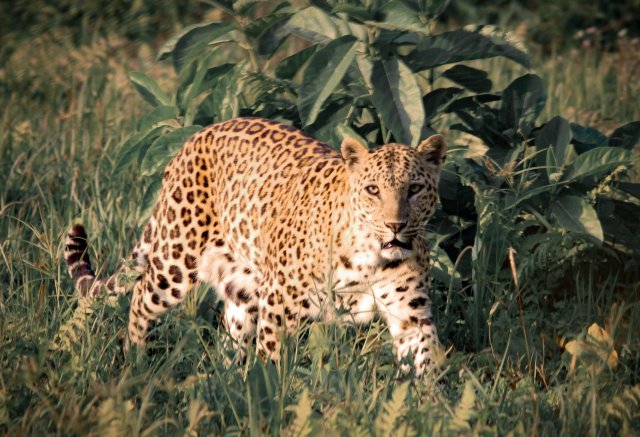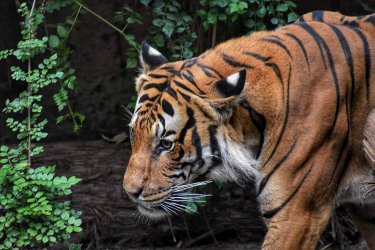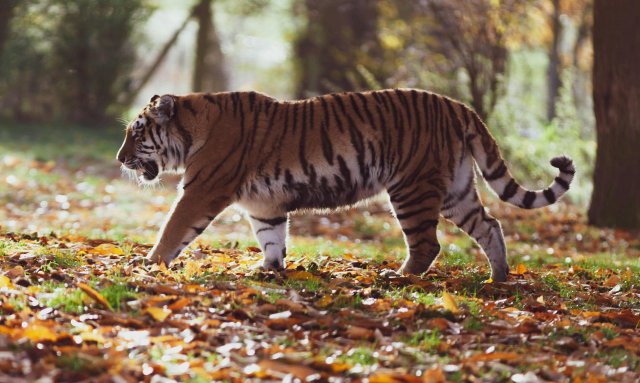The Amur Tiger, Also Known As The Siberian Tiger
The Amur tiger, also known as the Siberian tiger, is one of the world’s largest and most powerful cats. Native to the Russian Far East, the Amur tiger is the largest of the five tiger subspecies, with males weighing up to 660 pounds and measuring up to 11 feet in length. These majestic cats are an endangered species, with only an estimated 500 individuals remaining in the wild. Despite their dwindling numbers, the Amur tiger is still an awe-inspiring animal, and its presence in the wild is a reminder of the beauty and power of nature.
The Resurgence of the Amur Tiger Population: How Conservation Efforts are Helping to Rebuild the Species
The Amur tiger, also known as the Siberian tiger, is one of the world’s most iconic species. It is the largest of the five remaining tiger subspecies and is native to the Russian Far East. Unfortunately, the tiger population has been in decline for many years due to poaching, habitat loss, and other human-related activities. However, in recent years, conservation efforts have been successful in helping to rebuild the species.
In the early 2000s, the tiger population was estimated to be as low as 350 individuals. This was a drastic decrease from the estimated 1,000 individuals that were present in the 1940s. In response to this alarming decline, the Russian government and conservation organizations began to take action. In 2005, the Russian government established the Amur Tiger Conservation Strategy, which aimed to protect the species and its habitat. This strategy included the creation of protected areas, increased law enforcement, and the implementation of anti-poaching measures.
In addition to the government’s efforts, conservation organizations have also been working to protect the Amur tiger. Organizations such as the World Wildlife Fund (WWF) and the Wildlife Conservation Society (WCS) have been working to protect the species and its habitat. They have been conducting research, providing funding for conservation projects, and raising awareness about the species.
Thanks to these efforts, the Amur tiger population has been steadily increasing. In 2015, the population was estimated to be around 540 individuals. This is a significant increase from the estimated 350 individuals in the early 2000s. This increase is largely due to the successful conservation efforts that have been implemented in recent years.
The Amur tiger is an iconic species and its resurgence is a testament to the power of conservation. Thanks to the efforts of the Russian government and conservation organizations, the species is slowly but surely making a comeback. With continued conservation efforts, the Amur tiger population will continue to grow and thrive.
Exploring the Unique Characteristics of the Tiger: What Makes this Species so Special?
The Amur tiger, also known as the Siberian tiger, is one of the most iconic and beloved species of big cats in the world. This majestic creature is the largest of all the tiger subspecies, and it is also one of the rarest. With only around 500 individuals left in the wild, the Amur tiger is considered to be critically endangered.
The Amur tiger is native to the Russian Far East, where it inhabits the temperate forests of the Amur-Ussuri region. This species is well adapted to the cold climate of its habitat, with a thick coat of fur that helps to keep it warm in the winter months. Tigers are also an excellent hunter, with powerful muscles and sharp claws that allow it to take down large prey such as deer and wild boar.
The Amur tiger is unique in many ways. For one, it is the only tiger species that is able to survive in the cold climate of its habitat. This species is also the only one that has adapted to living in a temperate forest environment, rather than the tropical forests that are home to other tiger species.
The Amur tiger is also known for its impressive size. Males can reach up to 11 feet in length and weigh up to 660 pounds, making them the largest of all the tiger subspecies. Females are slightly smaller, but still impressive in size.
The Amur tiger is also unique in its social behavior. Unlike other tiger species, the Amur tiger is solitary and does not form social groups. This species is also known for its intelligence and cunning, which helps it to survive in its harsh environment.
The Amur tiger is an incredible species, and its unique characteristics make it a truly special animal. With its impressive size, intelligence, and adaptability, the Amur tiger is a species that deserves to be protected and preserved for future generations.
Conclusion
The Amur tiger is an incredible species that is both majestic and powerful. It is the largest of the big cats and is an important part of the ecosystem in its native habitat. Despite its size, tigers are an endangered species due to poaching and habitat loss. It is important to protect this species and its habitat so that future generations can continue to enjoy the beauty of tigers
Read More About Tigers From Wikipedia







